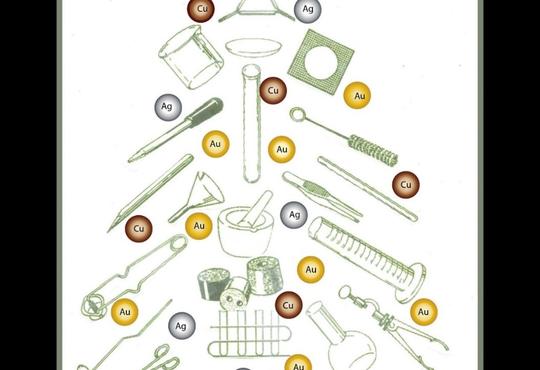And then it happened — I came across an online article that caused me to doubt what I had always believed. The headline read “Quantum gas goes below absolute zero”.1 The January 2013 Nature.com story reported on a published Science article2 in which “researchers have reached sub-absolute-zero temperatures with an ultracold quantum gas made up of potassium atoms”.
Sub-absolute-zero temperatures? Wait. I have always told students that the temperature could not go below absolute zero on the Kelvin scale. I taught — and was taught — that because all sciences involving energy used this scale, there was no need to worry about negative temperature. Absolute zero is theoretically when all molecular motion stops and therefore it cannot be reached. A discussion typically followed as students found it difficult to believe that absolute zero is not attainable. Teenagers do not like to be told that things are not attainable — but this is another topic entirely.
So had something happened in the world of physics and quantum chemistry that we, chemistry teachers, do not know about? Well, yes and no. I realize that this is more “physics” than “chemistry”. So why bring it up in Chem 13 News? Because it is usually the chemistry teacher who first introduces the concept of absolute zero. I don’t plan on starting a discussion using statistical mechanics or quantum physics but venture to make teachers aware of the rumblings behind “negative temperature” and suggest available resources worth reading and watching.
In very simple terms, we can start by safely stating that most physical systems have more atoms and molecules with energy states that are below the average of the system and a smaller number that are in energy states above the average. There is no negative temperature to worry about. To have a negative temperature researchers have managed to make systems where the energy distribution is inverted — more atoms and molecules in higher energy states than lower energy states, relative to the average. Actually this is not new. This phenomenon of population inversion is used to create lasers.
We have not stopped motion. In fact, it can be said that although we have negative temperature, we did not go through “zero” to get there. Exotic systems, such as quantum gases and lasers, can be made to have this population inversion. This inversion — a feat in itself — ends up giving a negative temperature in Boltzmann entropy definition, which is commonly used.
An online MIT news article3 explains:
The researchers analyzed past claims of negative absolute temperature and found that in all cases, scientists were interpreting experiments based on a flawed — though universally accepted — definition of entropy, or heat. This definition, called the Boltzmann entropy, appears in modern physics textbooks, and is widely used to calculate the absolute temperature of a wide range of physical systems…
Under very special conditions, it is possible to flip-flop, or invert, such energy distributions. A well-known example is the laser, which relies on the fact that the majority of its electrons occupy high-energy states. Applying Boltzmann’s definition of entropy in these situations yields a negative temperature…
The authors go on to suggest that, going forward, any researchers seeking to accurately measure the absolute temperature of exotic systems such as quantum gases should use Gibbs’ formula over Boltzmann’s. The entire article is online and worth a read. You might enjoy some of the “mind-blowing” concepts discussed, such as “negative absolute temperature doesn’t imply a system is colder than absolute zero but in fact, much, much hotter.”
Still confused? Well, I highly recommend a 13-minute video4 by Sixty Symbols called “Negative temperatures are HOT”. This video is probably not for high school students, but it is ideal for you as a teacher. It will help you wrap your head around the concept of negative temperatures. There is a lot of hand waving in the video, but it is worth the 13 minutes of time to watch. It gives the gist of negative temperature and population inversion. It is easy to follow, although I have to admit I did have to watch the video several times. It is surprisingly entertaining.
My favorite part of the video is when Professor Philip Moriarty responds to the statement: “It feels to me like negative temperatures, do not exist; you have just found a flaw in the equation.” Moriarty’s response:
“It is not a flaw in the equation, it is absolutely valid to do it this way. But the very interesting thing here is that this negative temperature is greater than any positive temperature.”
Trust me, watch the video and it will become clearer than anything I can write here — even if I had unlimited page space.
So do you try to explain to your high school students that negative temperatures exist and potentially complicate things or do we just let them wait until they take some graduate level courses in physics and quantum mechanics? This is your call, but it is always nice for a teacher to be aware of what is happening in the world of science. You never know when someone might ask you about negative temperatures — it is making the news in Nature.1 Also it is nice to know that what we have been teaching — absolute zero can never be reached — is valid. Although you might want to be careful how you word statements with the word never.
References
- Quantum gas goes below absolute zero, http://www.nature.com/news/quantum-gas-goes-below-absolute-zero-1.12146
- S. Braun et al., Negative Absolute Temperature for Motional Degrees of Freedom, Science 2013 Volume 339, pages 52–55.
- It is a negative on negative absolute temperature
- Negative Temperatures are Hot by Sixty Symbols https://www.youtube.com/watch?v=yTeBUpR17Rw






